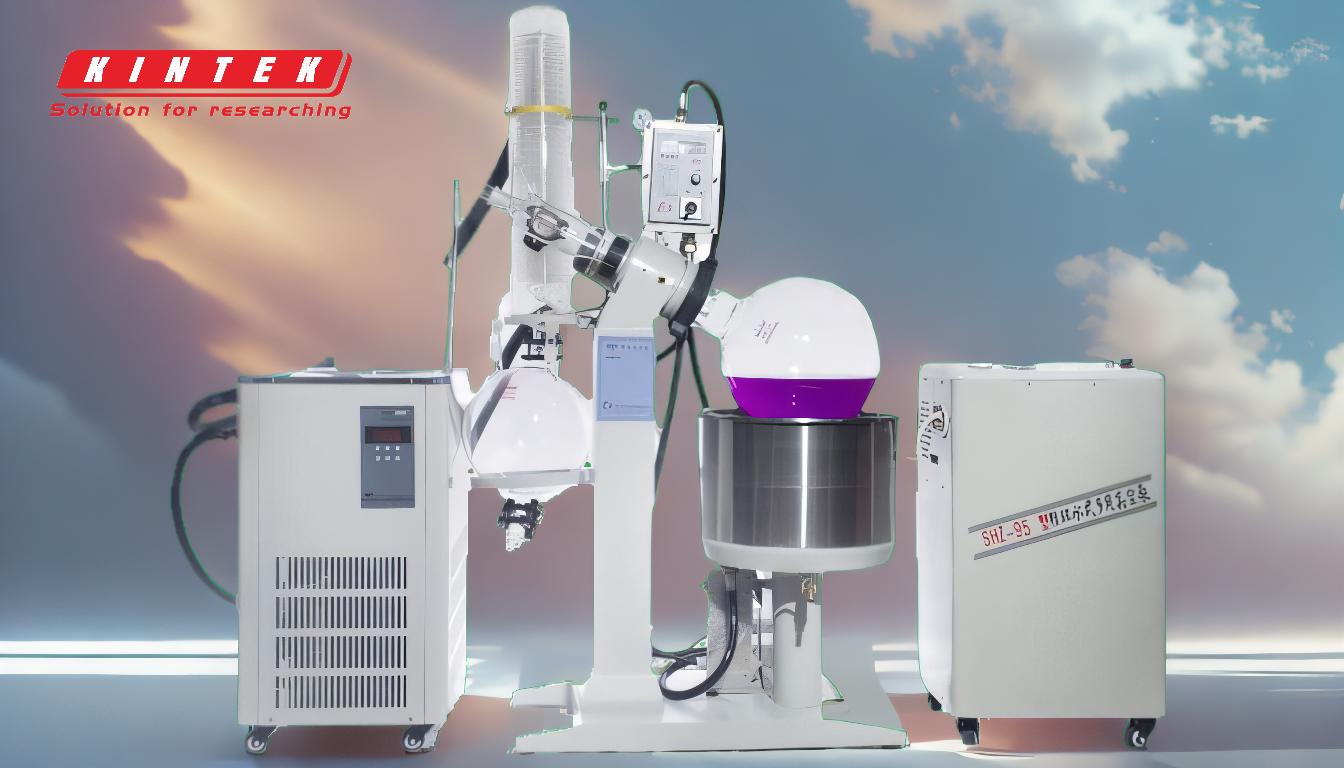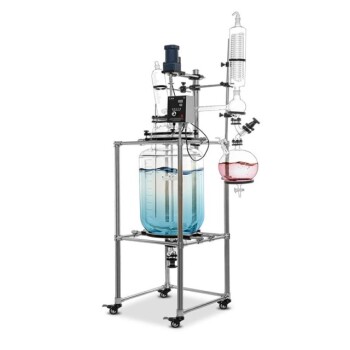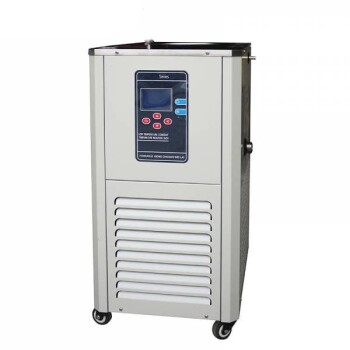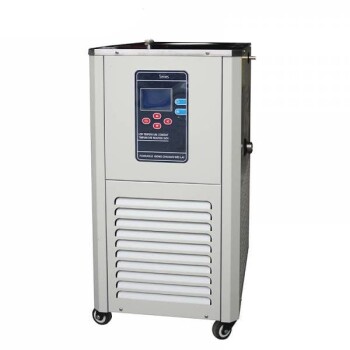The 20/40/60 rule for rotary evaporators is a set of guidelines designed to optimize the performance and efficiency of the distillation process. It ensures proper temperature management across the bath, vapor, and condenser, which is critical for effective solvent removal. The rule emphasizes maintaining a 20°C temperature difference between the bath, vapor, and condenser temperatures to achieve optimal condensation and prevent damage to the vacuum pump. Additionally, it highlights the importance of setting the chiller temperature to an optimal level rather than the lowest possible temperature, ensuring sufficient cooling capacity without compromising system efficiency.
Key Points Explained:

-
Understanding the 20/40/60 Rule
- The 20/40/60 rule is a temperature management guideline for rotary evaporators, ensuring efficient and safe operation.
- It involves maintaining specific temperature differences between the bath, vapor, and condenser to optimize the distillation process.
-
The 20°C Temperature Difference Rule
- The rule states that there should be a 20°C difference between the bath temperature, vapor temperature, and condenser temperature.
- Example: If the bath temperature is set to 50°C, the solvent vapor temperature should be 30°C, and the condenser temperature should be 10°C.
- This ensures proper condensation of the solvent vapor and prevents damage to the vacuum pump.
- The rule states that there should be a 20°C difference between the bath temperature, vapor temperature, and condenser temperature.
-
Importance of Optimal Chiller Temperature
- The 20/40/60 rule emphasizes setting the chiller temperature to an optimal level rather than the lowest possible temperature.
- This ensures sufficient cooling capacity for the condenser without overburdening the system or reducing its efficiency.
- Overcooling can lead to unnecessary energy consumption and potential inefficiencies in the distillation process.
-
Coolant Temperature and Condensation
- The coolant should always be at least 20°C cooler than the vapor temperature.
- This ensures proper condensation of the solvent vapor and prevents the vapor from reaching the vacuum pump, which could cause damage.
-
Practical Application of the Rule
- When setting up a rotary evaporator, follow these steps:
- Determine the boiling point of the solvent being distilled.
- Set the bath temperature to a value slightly above the solvent's boiling point.
- Ensure the vapor temperature is 20°C lower than the bath temperature.
- Set the condenser temperature to 20°C lower than the vapor temperature.
- Adjust the chiller temperature to maintain optimal cooling without overcooling.
- When setting up a rotary evaporator, follow these steps:
-
Benefits of Following the 20/40/60 Rule
- Improved Efficiency: Proper temperature management ensures faster and more efficient solvent removal.
- System Protection: Prevents damage to the vacuum pump and other components by avoiding vapor condensation issues.
- Energy Savings: Optimizing the chiller temperature reduces unnecessary energy consumption.
- Consistent Results: Ensures reproducible and reliable distillation outcomes.
-
Common Mistakes to Avoid
- Setting the chiller temperature too low, which can reduce system efficiency and increase energy costs.
- Ignoring the 20°C temperature difference, which can lead to incomplete condensation or damage to the vacuum pump.
- Overfilling the round-bottom flask, which can cause splashing and reduce the effectiveness of the distillation process.
-
Additional Tips for Using Rotary Evaporators
- Ensure the round-bottom flask is no more than half full to prevent splashing and ensure efficient evaporation.
- For large volumes, transfer the solution to a larger flask or evaporate in smaller portions.
- Weigh the clean, empty flask before starting to track the mass of the solvent removed.
- Avoid turning off the rotary evaporator unless necessary, as it can disrupt the distillation process.
By following the 20/40/60 rule, users can achieve optimal performance from their rotary evaporators, ensuring efficient solvent removal, system longevity, and consistent results. This rule is particularly valuable for laboratory technicians and researchers who rely on rotary evaporators for precise and reliable distillation processes.
Summary Table:
| Key Aspect | Details |
|---|---|
| 20°C Temperature Difference | Maintain a 20°C gap between bath, vapor, and condenser temperatures. |
| Optimal Chiller Temperature | Set chiller to an optimal level, not the lowest, to ensure efficient cooling. |
| Coolant Temperature | Coolant must be ≥20°C cooler than vapor to prevent pump damage. |
| Practical Application | Follow steps to set bath, vapor, and condenser temperatures for efficiency. |
| Benefits | Improved efficiency, system protection, energy savings, and consistent results. |
| Common Mistakes | Avoid overcooling, ignoring temperature gaps, and overfilling the flask. |
Maximize your rotary evaporator's performance—contact our experts today for personalized guidance!




















